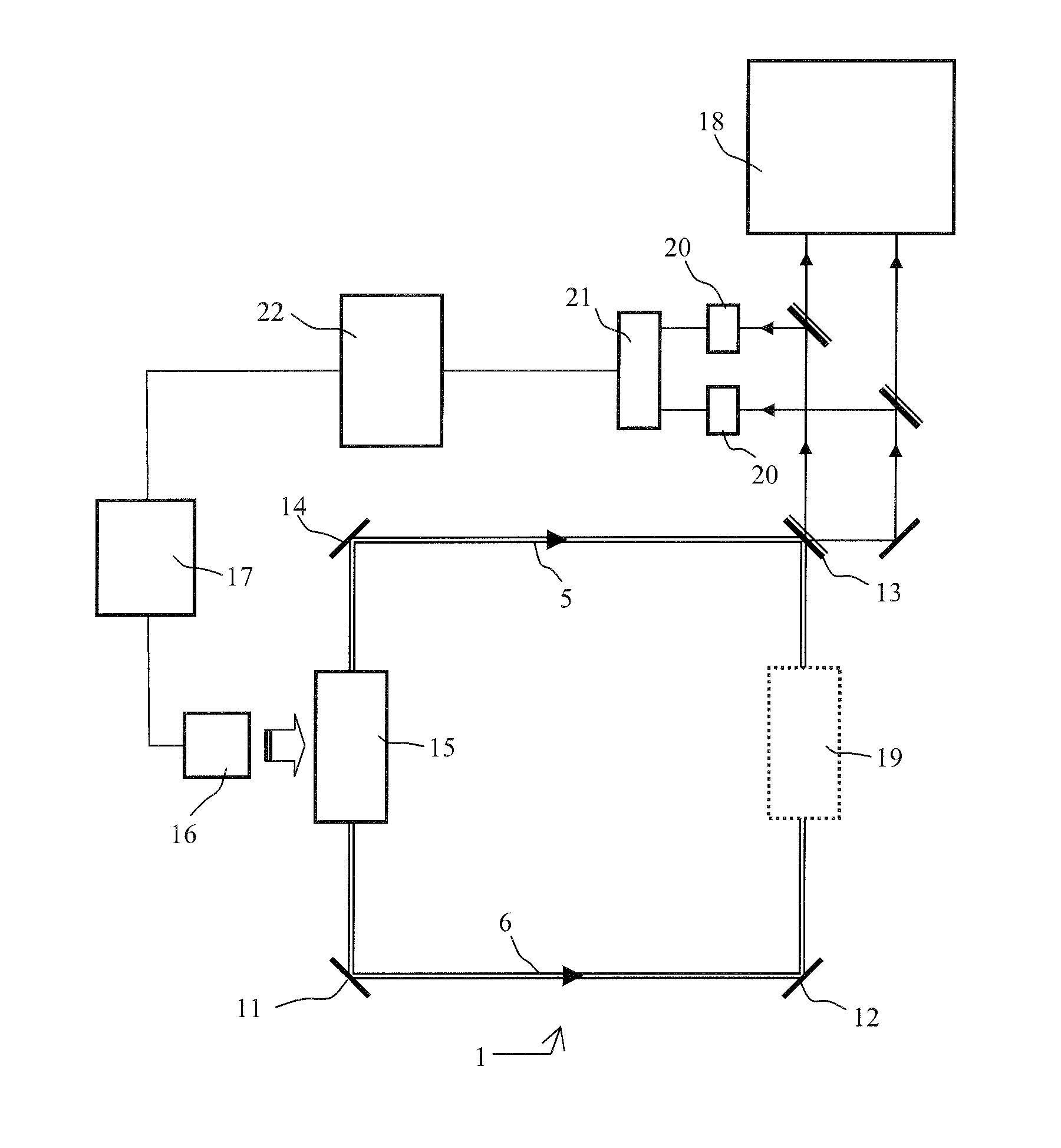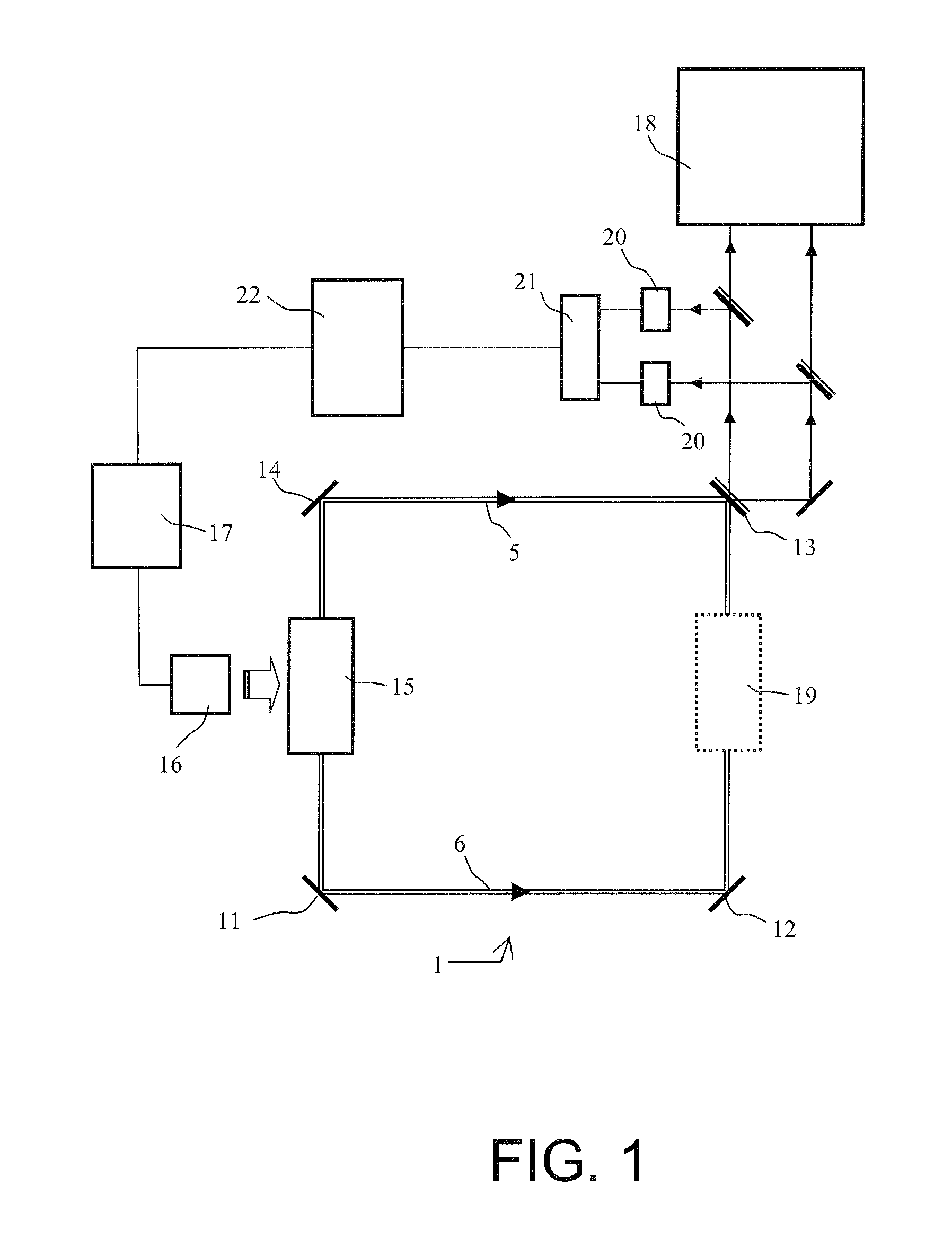Solid State Gyrolaser with Controlled Optical Pumping
a gyrolaser and optical pumping technology, applied in the direction of speed measurement using gyroscopic effects, instruments, surveying and navigation, etc., can solve the problems of difficult implementation of technology, high intensity of laser mode emission, and strong reduction of overall inertial performan
- Summary
- Abstract
- Description
- Claims
- Application Information
AI Technical Summary
Benefits of technology
Problems solved by technology
Method used
Image
Examples
Embodiment Construction
[0022]It is advantageous, before describing an embodiment of a gyrolaser, to recall the functioning of a class B laser. In the context of a simplified model, a class B laser can be described by the two real parameters E and N respectively representing the electrical field inside the cavity and the population inversion or gain of the laser. These two parameters obey the following semi-conventional differential equations (B):
Et=-γ2·E+σl2T·NEandNt=W-NT1-aE2N2T1where
[0023]σ represents the effective laser emission cross-section;
[0024]l is the effective length of the gain medium;
[0025]T is the time taken by a photon to pass through the cavity;
[0026]W is the optical pumping rate;
[0027]with
η=WσlT1γT-1
and α being the saturation parameter.
[0028]With these notations, and furthermore introducing the lifetime of the coherences T2, the conditions (C) for having a class B laser are written:
T1>>T2 and T1>>γ−1
[0029]As a non-limiting example, for a solid state ring laser whose cavity has a perimeter...
PUM
 Login to View More
Login to View More Abstract
Description
Claims
Application Information
 Login to View More
Login to View More - R&D
- Intellectual Property
- Life Sciences
- Materials
- Tech Scout
- Unparalleled Data Quality
- Higher Quality Content
- 60% Fewer Hallucinations
Browse by: Latest US Patents, China's latest patents, Technical Efficacy Thesaurus, Application Domain, Technology Topic, Popular Technical Reports.
© 2025 PatSnap. All rights reserved.Legal|Privacy policy|Modern Slavery Act Transparency Statement|Sitemap|About US| Contact US: help@patsnap.com



